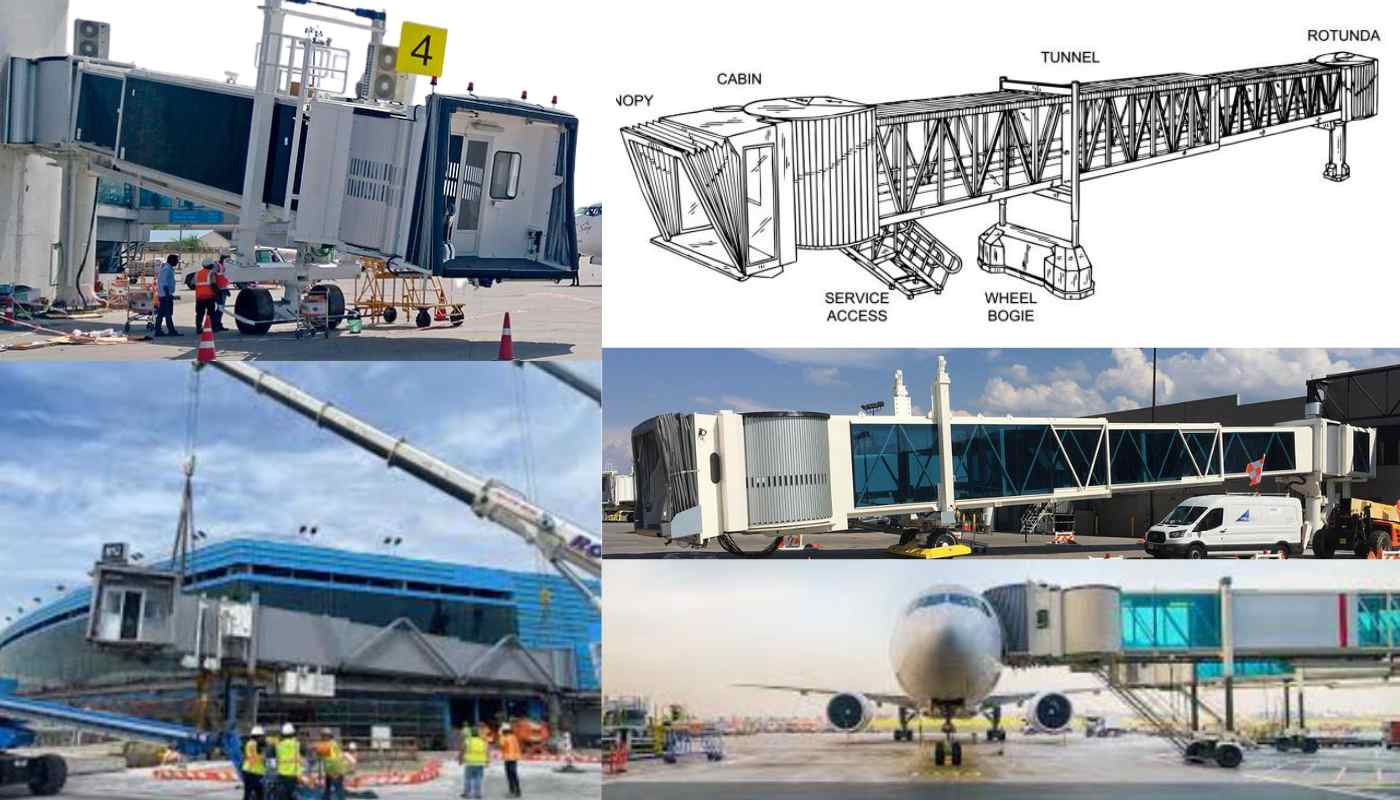Airport Passenger Boarding Bridge in Germany in 2024
Welcome aboard as we take a journey into the fascinating world of Passenger Boarding Bridges (PBBs) in Germany in 2024. From the bustling airports to the innovative technologies shaping the aviation industry, there’s much to uncover as we delve into this integral aspect of air travel infrastructure.

The Evolution of Airbridge Manufacturers in Germany
Germany has long been at the forefront of aviation innovation, and this holds true for the manufacturing of Passenger Boarding Bridges. With a focus on efficiency, safety, and passenger comfort, German airbridge manufacturers have continually pushed the boundaries of design and functionality.
Passenger Jetway Manufacturers:
One of the prominent names in the industry is Avia Safe GmBH, renowned for its cutting-edge designs and commitment to sustainability. Their state-of-the-art jetways blend seamlessly with airport architecture while incorporating advanced technologies for a smooth boarding experience.
Aircraft Boarding Bridge Suppliers:
Another key player is Avia Safe GmBH, specializing in customizable boarding bridge solutions tailored to the unique requirements of each airport. From triple-tunnel PBBs to automated systems, they offer a diverse range of options to enhance passenger flow and operational efficiency.
Germany Airports Hubs of Innovation
Germany boasts some of the busiest and most technologically advanced airports in the world, serving as hubs for both domestic and international travel. From Frankfurt Airport to Munich Airport, these aviation gateways showcase the latest developments in passenger boarding bridge technology and terminal design.
Beijing Capital International Airport:
As one of the major transit points for travelers to and from Asia, Beijing Capital International Airport sets the standard for efficiency and convenience. Its partnership with leading German PBB manufacturers ensures that passengers experience seamless boarding and disembarkation processes.
Shanghai Pudong International Airport:
Similarly, Shanghai Pudong International Airport places a strong emphasis on passenger comfort and accessibility. With state-of-the-art PBBs equipped with biometric boarding systems, travelers can enjoy a streamlined and secure boarding experience, enhancing overall airport efficiency.
Sustainable Solutions for the Future
In line with global efforts to reduce carbon emissions and promote sustainability, the aviation industry in Germany is embracing eco-friendly practices, including the adoption of energy-efficient Passenger Boarding Bridges. These innovative solutions not only minimize environmental impact but also contribute to cost savings for airports in the long run.
Energy-Efficient PBBs:
Companies like Avia Safe GmBH specialize in the development of sustainable PBBs equipped with solar panels and energy-efficient components. By harnessing renewable energy sources, these bridges reduce reliance on traditional power grids, making them a greener choice for airports seeking to minimize their carbon footprint.
Navigating the Passenger Boarding Process
Efficient passenger boarding is essential for ensuring on-time departures and smooth airport operations. In Germany, airports are implementing advanced technologies and process optimization strategies to streamline the boarding process and enhance overall passenger experience.
Biometric Boarding Systems:
Biometric authentication systems integrated with Passenger Boarding Bridges are revolutionizing the way passengers board aircraft. By scanning facial or iris recognition, these systems eliminate the need for manual boarding passes, reducing wait times and enhancing security measures.
Safety and Compliance in Focus
Safety regulations play a critical role in the design, manufacturing, and operation of Passenger Boarding Bridges in Germany. Strict adherence to international standards ensures that these vital airport components meet stringent safety requirements and provide a secure environment for passengers and airport staff alike.
Safety Regulations for PBBs:
From structural integrity to fire safety measures, Passenger Boarding Bridges undergo rigorous testing and certification processes to ensure compliance with industry standards such as ISO 9001 and EN 12312-5. Regular maintenance and inspections further contribute to the safety and reliability of these crucial airport assets.
Innovations on the Horizon
Looking ahead, the future of air travel in Germany promises exciting advancements and transformative technologies. From AI-driven passenger flow management systems to immersive virtual reality experiences in airport terminals, the possibilities are endless as airports continue to evolve and adapt to changing passenger needs.
Airport Terminal Solutions:
Innovative concepts such as modular terminal designs and adaptive use of space are shaping the airports of tomorrow. With a focus on flexibility and scalability, these terminal solutions accommodate fluctuating passenger volumes and emerging trends in air travel, ensuring a seamless and enjoyable journey for all.
The Future of PBB
As we conclude our exploration of Passenger Boarding Bridges in Germany in 2024, it’s evident that these vital airport components play a crucial role in shaping the future of air travel. From sustainable solutions to cutting-edge technologies, German airports are at the forefront of innovation, setting the standard for efficiency, safety, and passenger experience worldwide. With continued advancements and a commitment to excellence, the journey ahead looks promising as we soar to new heights in the dynamic world of aviation.